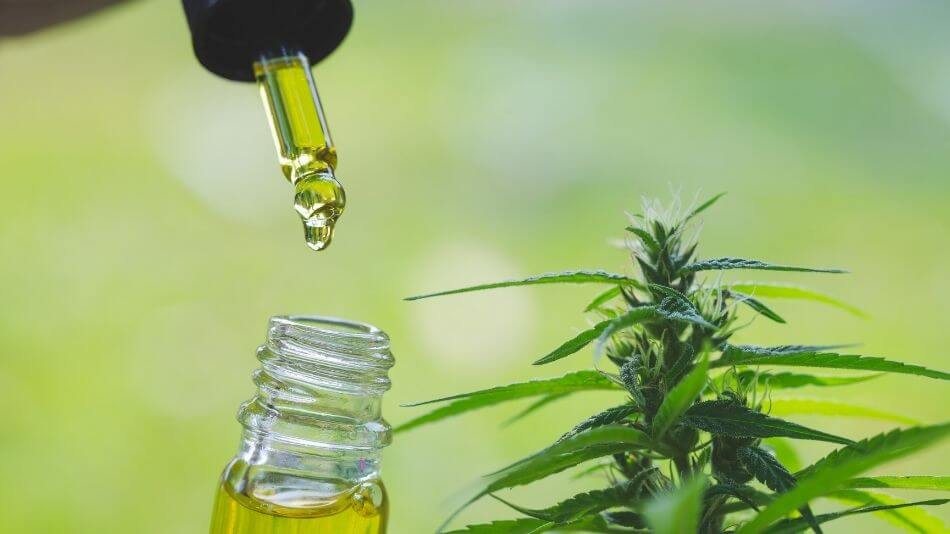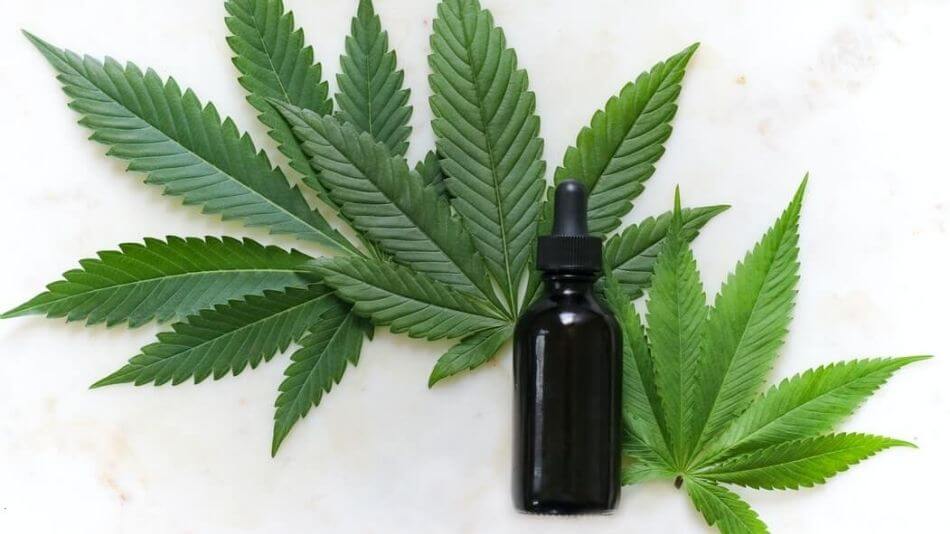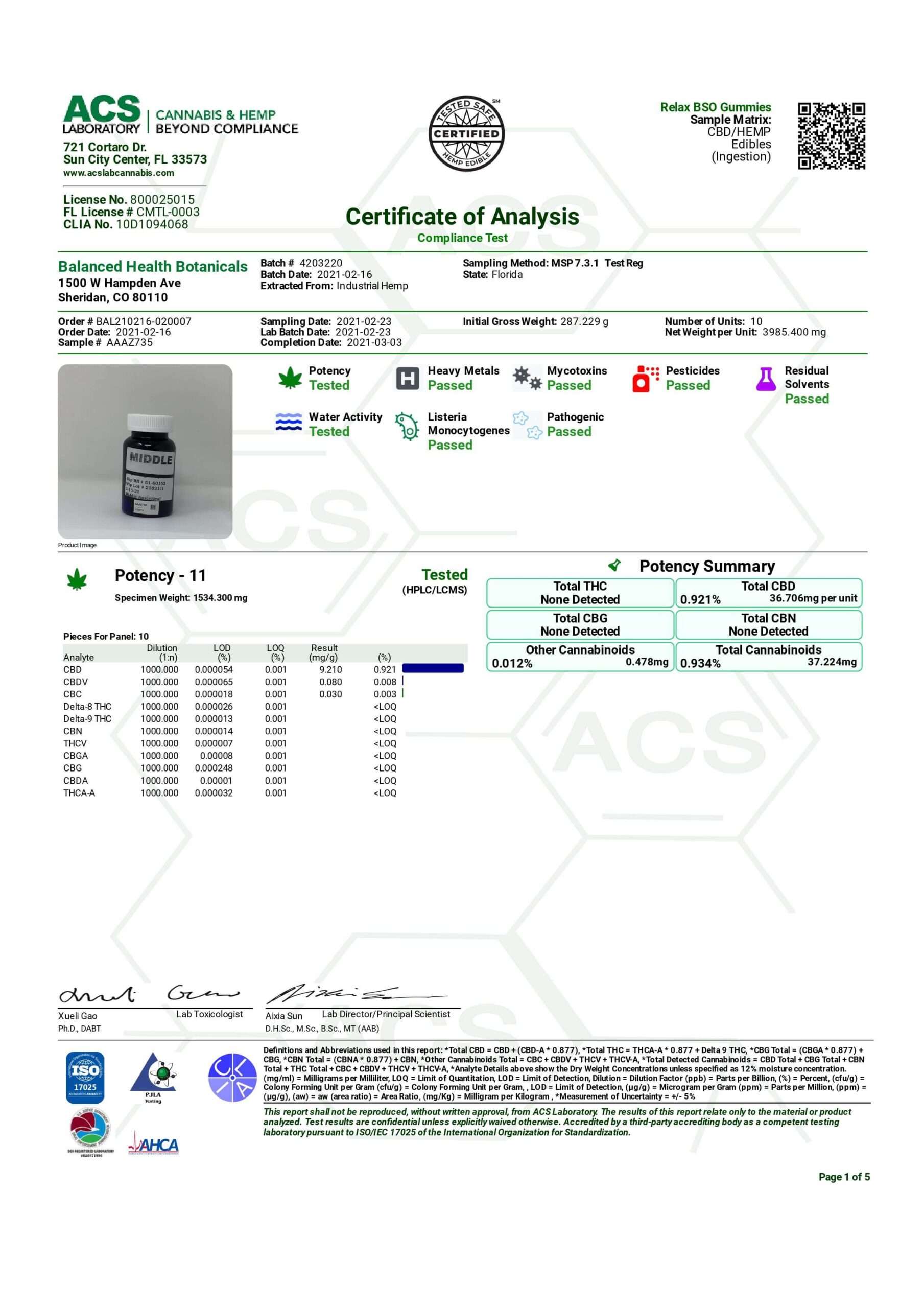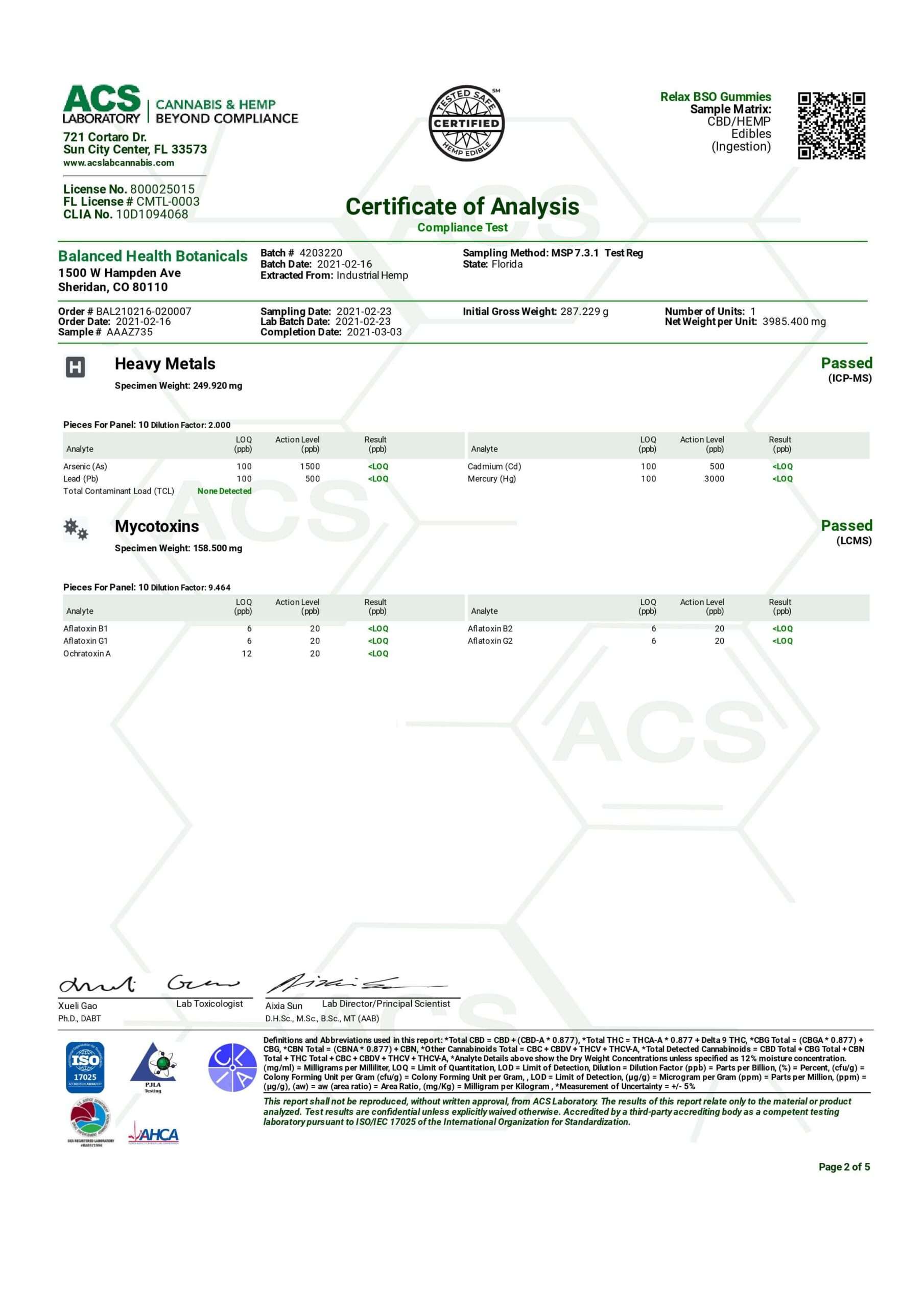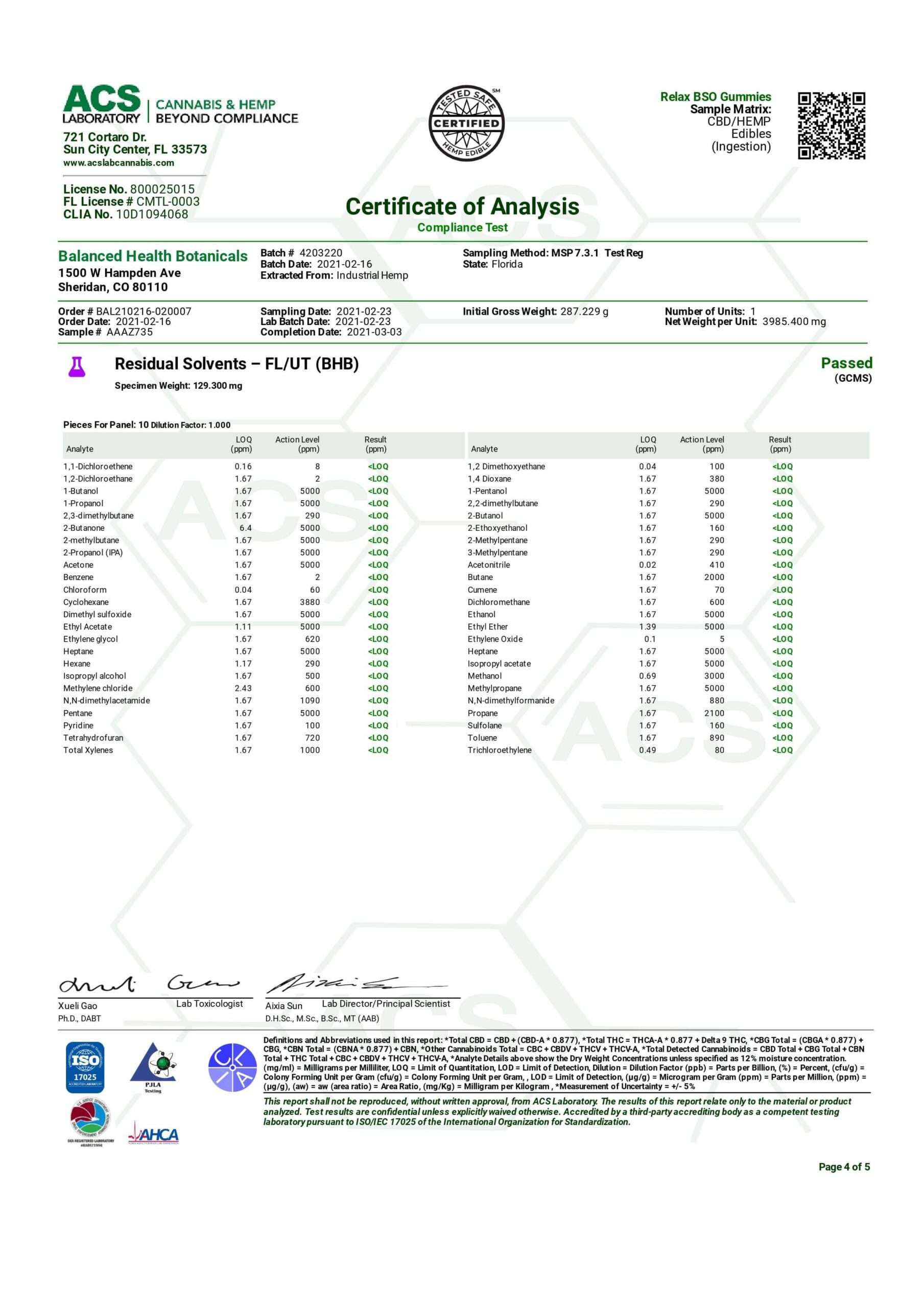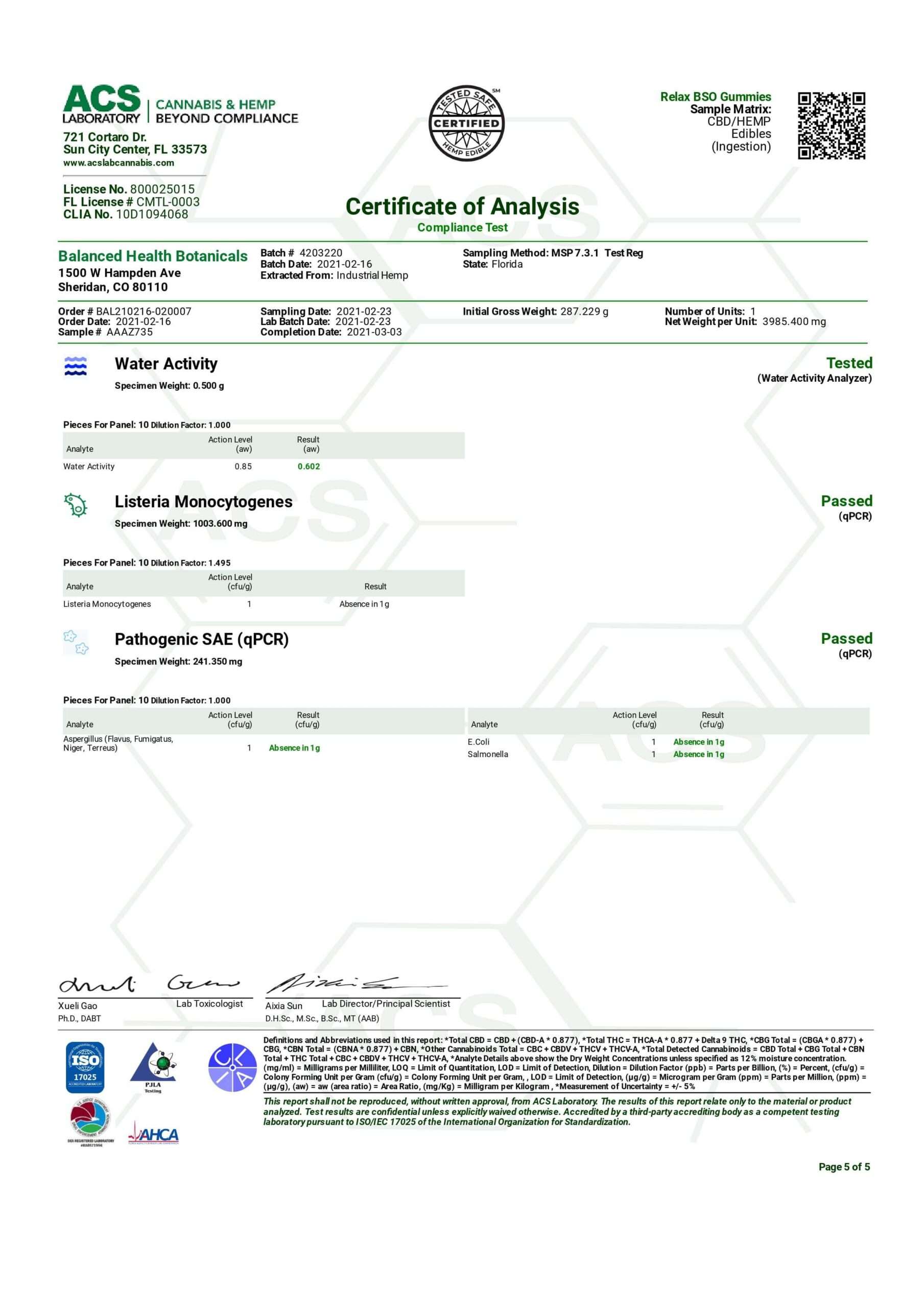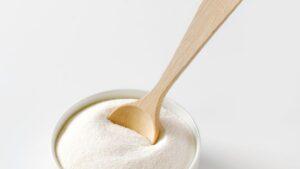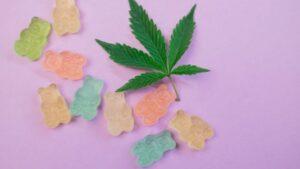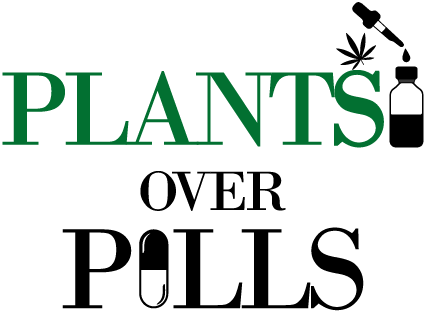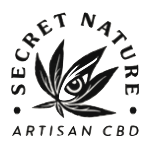An important part of buying and using CBD safely is understanding what to look for and avoid on a label. To do that, you’ll need some help from your product.
Reading CBD labels on packaging and websites help you learn how many servings are present, what a serving looks like, etc., but you’ll need a certificate of analysis to learn about the molecular makeup of your product. Avoid products and sellers that don’t provide these details.
Once you’ve obtained a certificate of analysis, you’ll need to be able to navigate and understand the information it gives you. Doing so can be more challenging than it may seem; these detailed reports provide very specific information that can be confusing to the average reader.
That’s why we’ve created this comprehensive guide on reading and making sense of CBD labels and certificates of analysis; it shouldn’t be an obstacle to want to use products with care.
CBD Label Requirements
Even though CBD is federally legal (and has been for several years now), it is not regulated by the Food and Drug Administration (FDA). Still, there’s some vital information that sellers still must provide for their product, which essentially functions like a supplement would in the eyes of the law.
This fact unfortunately means that much of the responsibility for vetting out ineffective, poor quality, or otherwise undesirable products.
Certificates of analysis, which we’ll discuss in more depth later, provide some much-needed insight into what exactly is in your product, but basic CBD label requirements share very little about what you’re working with aside from the following details:
Serving Size
A serving size refers to the amount of product that’s considered to be one “serving.” In most cases, a single serving of a CBD product usually coincides with a single dose of the product, but this may or may not always be true.
Servings per Container
Your product should also detail how many individual servings are packaged in the container. If you’ve purchased CBD gummies, for instance, your product should explain how many servings can be found in the total container of the gummies.
Amount per Serving
This figure explains how much of the actual product constitutes a serving.
Rather than serving size, which tells you how big of a piece of your product a serving is, amount per serving more precisely notes how many individual inhales, drops, etc. will lead you to one dose.
Other Ingredients Besides Hemp/Cannabis
Also necessary is the inclusion of any ingredients aside from cannabis or hemp. Other ingredients may pose risks of their own, particularly those related to allergies or even interacting with prescription medications.
FDA Disclaimer
Because CBD products are not regulated by the FDA, they must contain text that clearly states this fact to the consumer. This statement takes the form of an FDA disclaimer:
“These statements have not been evaluated by the Food and Drug Administration. This product is not intended to diagnose, treat, cure or prevent any disease.”
Most Important Things to Look For on CBD Labels
Beyond the basic facts of your product, including things like serving size and amount per serving, you should also note important characteristics like the type of formula, potency, and more.
These sorts of details can help you understand how to best use your product, but also whether or not it’s the type of product you’re actually after.
Full-Spectrum, Broad-Spectrum, or CBD Isolate: What’s the Difference?
Full-spectrum, broad-spectrum, and isolate formulas all handle the question of how much CBD and other compounds will be present in the finished product differently.
Full-spectrum CBD is created without the removal of any parts of the cannabis plant, meaning it delivers a wide profile of not just cannabinoids, but also terpenes and flavonoids.
A full profile of these things can help you take advantage of the entourage effect, in which the results of using a CBD or other cannabis product are enhanced by the presence of multiple parts of the plant.
Broad-spectrum CBD is the second type of formula to consider. These types of products contain things like terpenes and flavonoids, but they are specifically created without THC.
Broad-spectrum CBD, then, allows you to take advantage of some of the benefits of full-spectrum without exposing yourself to even trace amounts of THC.
If avoiding the presence of other compounds and ingredients entirely is your goal, CBD isolate products are for you. These products, as the name implies, are created with solely CBD that’s been isolated from other parts of the plant.
CBD isolate is very potent, too, which makes it a great choice for those who need stronger doses of product.
Cannabinoids, Terpenes, and Flavonoids
Also significant when it comes to influencing the type of experience you have are terpenes and flavonoids, which are naturally-occurring compounds found in the cannabis plant that give it its smell, color, and taste.
These compounds don’t just help add some personality to your product, though; they can have a truly practical effect. Some terpenes, for instance, tend to be associated with certain effects, like energy or alertness.
So, seeking out information about these pieces of the puzzle can help you get a better feel for what type of experience you can expect.
Understanding Third-Party Testing of CBD Products
To find information about each of the factors we’ve discussed and more, it’s important to understand how to read and use a certificate of analysis.
A certificate of analysis (COA) is a report created after a CBD product is tested in a third-party lab and details which compounds, ingredients, etc. are found in your product, and at what levels.
Reputable companies should always provide a complete COA for all of their products. Be very wary of sellers who do not; companies that only provide cannabinoid content should not be trusted!
To illustrate the importance of a COA and all of the details it provides, we’ll break down one ourselves in detail. Below is a COA for one of our favorite products, CBDistillery’s Broad-Spectrum Anytime Gummies, as an example.
The first page of the COA summarizes the findings of the rest of the report in one, easy-to-read graphic. It also breaks down potency findings for the product, including the amount of THC, CBD, CBN, and other cannabinoids found in the product.
A complete breakdown of potency levels for each type of possible cannabinoid is also listed for an even more detailed look at what you’re getting.
Also present are the signatures of the professionals who conducted the testing, which is useful should you ever need to get into contact with anyone who has worked on your product.
The second page gives information about the amount of heavy metals or mycotoxins found in the product.
Mycotoxins, which are generally produced by molds or fungi, are naturally-occurring toxins that can cause serious consequences, including death, for an individual who consumes even small amounts.
Certain heavy metals can also be problematic for similar reasons. So, testing is conducted to check for higher-than-acceptable levels of each of these types of compounds.
To “pass” this round of testing means to contain acceptable amounts of each of these types of substances (or less). Safe, reliable products, then, should pass each of these tests on their COA.
Likewise, pages three and four of the COA detail how much pesticide and residual solvent (leftover from the manufacturing process) is found in your product.
These pages explain in depth which pesticides or solvents, if any, can be traced, and to what extent these substances are present in your product. Again, products that are safe to use should pass each of these tests.
Finally, the last page of the COA contains information about water activity (how bound water molecules are in the product) and checks for potentially harmful pathogens.
The information on this page is most relevant to your safety. A poor water activity reading is indicative of a product that may be more prone to growing mold (as microbial growth may occur in the gaps between loosely-bound molecules).
Likewise, exposure to harmful bacteria or pathogens can also contaminate your product. So, ensuring that what you have passes is a must.
How to Determine CBD Concentration and What’s In a Serving
To figure out how much CBD is in the product you’re interested in, it’s a good idea to turn to its COA, which should detail exactly how much of the cannabinoid (and others) is in the package.
Depending on what you’re working with, doing some quick math using the potency level provided by your product and the total amount you’re working with can also help you figure out how much is in it.
For instance, if you know that your CBD flower has a potency level of 25%, and you have 1000 mg of flower total, then you can determine that 250 mg of your product are CBD itself.
From there, you can begin to figure out how much is in an individual dose as necessary.
How Do You Determine CBD Potency?
CBD potency is usually fairly easy to determine because it should be accessible in some way on the product itself, whether it be on the packaging it comes in or its COA.
If potency isn’t described in terms of percentages, no problem! It’s usually easy to figure out yourself so long as you know how much product you have and how much CBD is present.
Using the example discussed above, if you have 1000 mg of flower total and know, whether it be from a COA or something else, that each package of flower contains 250 mg of CBD.
So, you can determine that your CBD flower’s potency level, in this case, is around 25%.
How Do You Calculate CBD mL?
To calculate how much CBD is in a single ml of product, you’ll need to know how much product total you have and how strong the product is. The most straightforward method is to divide the amount of CBD in mg by the number of ml in the bottle to find out how many mg of CBD are in a single ml.
If you don’t know how many mg of CBD you’re working with, potency level can be helpful.
You can use it to figure out how many mg of CBD you have (compared to how many mg make up the entire product) and complete the calculation described above.
Where to Buy Trustworthy CBD Products
All trustworthy CBD sellers should make it easy to access the information found in your COA (and the COA itself), but unfortunately, because CBD products are not regulated by the FDA, it’s up to the consumer to ensure that what you purchase is worthwhile.
That means that it’s worthwhile to understand how to determine whether or not a seller or product is trustworthy.
A lack of COA and information in general is certainly a red flag, but sometimes even brands that do provide these resources still skimp on the quality and consistency of their products.
Here at CBD Facilitator, we understand just how complex and frustrating the CBD market can be, especially when you’re trying to avoid products that waste your time and money.
That’s why we’ve created our directory, which is full of information about all sorts of sellers, the products they create, and whether they deliver on their promises.
Our directory makes it easier than ever to find a product that can meet your needs and goals, and you can rest assured that each of our recommendations comes after personal testing and experience.
We understand good cannabis, but we also understand what consumers want: to find great products for a reasonable price, and avoid being misled throughout the process.
